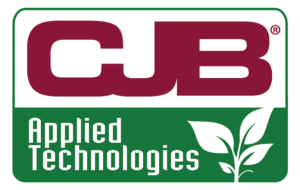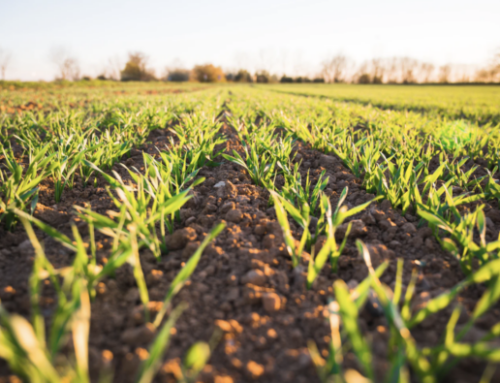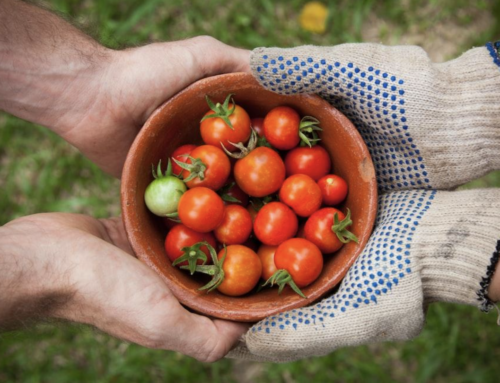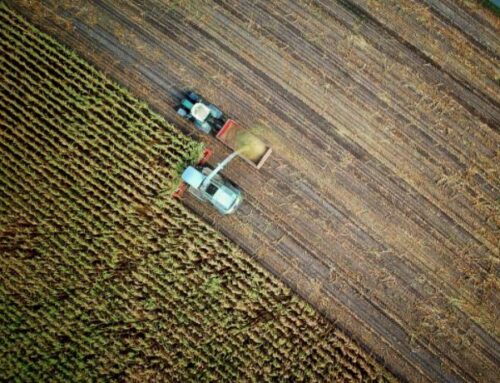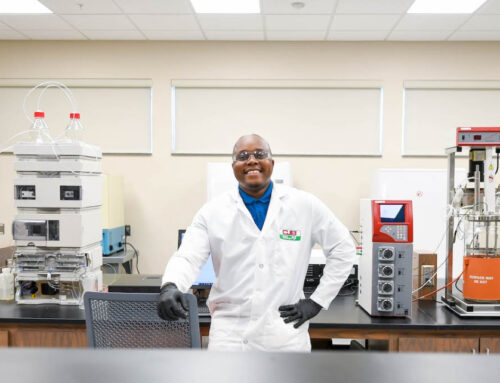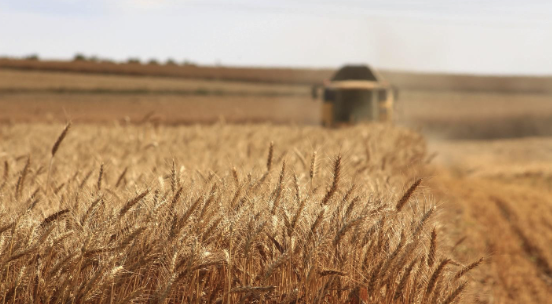
In the wake of the COVID-19 pandemic, many organizations are on their way back to the full swing of live gatherings, workshops and events. And that includes the latest annual conference put forth by the Council of Producers and Distributors of Agrotechnology. (The CPDA) Adjuvant and Inerts Annual Conference was recently held in beautiful Nashville, TN in May 2022, and the event featured the industry’s best and brightest sharing their outlook on the major factors impacting the state of agribusiness, both now and in the future.
It should come as no surprise that many of the global crises and factors affecting nations and economies are also greatly impacting the agricultural industry. Along with an increased focus on climate change and sustainability, the global food crisis, deglobalization efforts and the evolution of farming from traditional to innovation-based, key stakeholders were given a glimpse into how future investors and business leaders are shifting the ag industry and their business to match consumer demand and global trends.
Key Takeaway #1: Ag is Healthy and Will Remain So Through 2022
Through a combination of rising geopolitical pressures, COVID aftermath and recovery, and continued inflation, grower crop prices are increasing the revenue in agriculture. Commodity pricing is up in all major crops including corn, soybeans and wheat. Collectively, crop cash receipts are forecast at $248.6 billion in 2022, an increase of $12.0 billion (5.1 percent) from the forecast for 2021 in nominal terms, as per the USDA.
While the gross revenue prognosis remains positive, unsettling questions remain.
What will happen to input costs, including fuel and fertilizer? Have prices peaked? Will they start coming down?
The bottom line, and what begs to be answered in time, will be whether the revenue increases will be enough to offset input price increases so that farmers can still remain profitable.
RELATED: How Ag Retailers and Growers are Working Together to Manage Soaring Crop Input Costs
Key Takeaway #2: Environmental-Social-Governance (ESG) is Taking Center Stage
Driven by Millennial and Gen Z consumers who place a high value on sustainability, key stakeholders in agriculture are investing efforts and capital into this cause. They are asking themselves how they can improve their environmental footprint, social position, and governance.
Companies that produce traditional synthetic chemicals and those that produce biologicals are looking into chemical formulation alternatives utilizing “greener” components.
CJB Applied Technologies hears the concerns of the consumer and is aligned with these initiatives. We manufacture using sustainable practices. Our greenhouse operations and pilot plant production offer better ways to smartly use resources while reducing our carbon footprint.
We source greener ingredients, such as green solvents, biological products and very low active ingredient level products to give our customers many more product and ingredient alternatives in their formulations.
Learn More About CJB Applied Tech’s Pilot Plant Production
Learn More About the Role of Greenhouse Operations in Formulation Development
Key Takeaway #3: Deglobalization is Set in Motion
Driven by heated worldwide geopolitical conflict as well as the pandemic aftermath, many businesses are choosing to protect themselves through deglobalization efforts. World economists say that globalization has peaked and we must manage its decline properly in order to avoid past mistakes.
Organizations are realizing there is strength in diversity and redundancy, and are therefore focusing efforts on sourcing supplies and raw materials domestically as well as partnering with alternative international suppliers. By adding two to three layers of redundancy, businesses are hoping for more consistency in obtaining supplies and raw materials and less bottlenecks in product development and manufacturing.
Along with domestic sourcing, many are bringing technicals into the US instead of pre-formulated products. This allows us to formulate the products for them here.
RELATED: How We Can Properly Manage Deglobalization
Key Takeaway #4: Focus on Cross-Functionality and Agility
Products are being formulated and manufactured with much more focused intent, and that includes their ability to serve purposes across multiple industries or industry segments.
A product can be much more successful if it can cross different market segments, such as agriculture, forestry, turf, nursery, and ornamental.
There are also increased efforts on a product’s agility: how flexible is it for use in different applications? Can a formulation be administered through a farmer’s equipment, an aerial applicator, or a drone?
Versatility will improve the product’s attractiveness and value.
RELATED: Factors to Consider When Formulating an Agricultural Chemical Product
Key Takeaway #5: The Global Food Crisis
Rising geopolitical conflict – particularly, the Ukraine war – has shortened food supplies on an international level, leading to a global food crisis.
Food is now being viewed through a national security lens. Governments are being challenged with maintaining food supplies at an affordable cost.
How secure are you as a country or government if you can’t feed your people?
How strong are you as a country if you’re producing enough to feed other countries?
When citizens don’t have food, they begin to panic at the fear of mass starvation. This threat can lead to chaos and conflict and can cause many natives to flee their homeland for the next country holding their proverbial hand out. Food will be a direct means to an exchange of power. This issue will be one to watch as we see how certain nations choose to act and how citizens respond.
RELATED: Food Innovation and Sustainability Amidst a Global Food Crisis
Key Takeaway #6: The Rise of Consumer Food Consciousness
As Generation Z and Millennials are demanding more socially conscious goods and products, concerns rise over ethical practices:
How is food sourced, produced and harvested?
What other ingredients are in these foods?
There’s a strong awareness and concern about what we’re putting in our bodies with a shift towards high-quality ingredients and a desire to avoid possibly dangerous chemicals, processing methods and their byproducts, and unethical practices.
With this focus, ag production is shifting to meet consumer demand. Ag will be moving more rapidly towards products engineered for a specific output, such as higher levels of beta carotene.
As farmers adapt to remain forward-thinking, there will be a greater concern about the attributes and characteristics of a crop versus its yield. More money, time and effort will be placed in quality foods with specific ingredients and precise manufacturing and harvesting methods rather than mass production of mediocre-quality crops.
Key Takeaway #7: Farming is Shifting from Tradition to Innovation
Three main areas will affect the future of farming. New, entrepreneurial-minded owners and venture capital investors will have the resources to shift agriculture in the direction of increased efficiency, the adoption of new technology, and the implementation of product lifecycle traceability.
Efficiency
As farmers fight to remain relevant by meeting consumer’s needs, new operations and practices will be more costly. As a means to survive and remain efficient, many companies will merge and consolidate.
- 2022: 110,000 farms make up 70% of the gross farming production
- 2040: This number is predicted to drop to 60,000 farms
Technology
Automation and Artificial Intelligence (AI) is affecting every industry, and farming will not be an exception. Technology will automate many traditional practices and lead to a much greater efficiency and effectiveness of operations.
Traceability, Transparency and Sustainability
To appease consumer’s need for sourcing ethical and sustainable produce, crops may receive a barcode with a blueprint of its lifecycle: its origin, production and harvesting methods, and more.
Many forward-thinking companies worldwide are already adopting these practices, and more will follow suit in due fashion.
RELATED: Sustainable sourcing, transparency and traceability grow in prominence in the dairy market
RELATED: Worldwide Efforts to Improve Sustainability Projects and Improve Traceability
What Will the “New” Farmer Look Like?
The new era of business owners and entrepreneurs across every market will be world problem solvers. More philanthropy minded, the most innovative, world-changing thought leaders will dive deep into the root cause of a problem and adapt their business to address it directly.
“Entrepreneurship education is fast becoming a priority. Teaching entrepreneurship is all about using creativity and critical thinking to define and solve real-world problems,” says Danelle Cross of the ESSTEAM pilot program.
This shift will be seen in the agricultural industry as well. This innovative business model venture will require a high monetary investment. The new era of farmers will have a greater business IQ as well as an in-depth knowledge of traditional farming practices.
He or she will be much more business-savvy and be very adaptable and flexible to new processes, operations and technology and will have an intensive drive to succeed: a true entrepreneurial mind.
The agricultural entrepreneur will want to adopt new technology as early as possible and make it fit their operation. They will grow the crops being demanded by society and the consumer. They will position themselves smartly and strategically and will build novel partnerships with people that can facilitate their business and their growth, involving both who they sell their crop to and who they choose to partner with for supplies and materials.
RELATED: How SA agri-tech startup IQ Logistica is helping farmers scale more efficiently
Key Takeaway #8: The Consolidation of Ag Retail
Statistics don’t lie, and the current snapshot of ag retail shows us that the traditional ag channel is at risk. If margins continue to decline, people costs continue to rapidly increase, and interest costs increase, the average retailer in business today will be losing money by 2025.
How will this affect agriculture as a whole? These retailers and distributors are supplying all of the inputs to farmers. Operating from a very small profit window with stiff competition, it will be sink or swim for most of these organizations in just 3 years.
Just as farms will be doing, ag retailers will have to merge and consolidate or simply fold if they cannot adapt to the shift from traditional farming.
Become Innovative, Listen to the Consumer, Increase Efficiency, Focus on Quality
Key stakeholders and respected industry leaders who are committed to bettering the future of ag are willing to collaborate, share information, and partner with individuals, investors and organizations who are growth-minded and enthusiastic about shifting our industry to match consumer demand, international challenges and global trends.
As alarming as these eight takeaways may seem, keeping our sights set on these concerns just as they are emerging allows us to view change as an opportunity to adapt, scale and become more efficient than ever before.
We are listening to the concerns and needs of today’s consumer as well as those of our customers. We are working hard to align our efforts to meet today’s challenges and bring value to our customers and society as a whole.
